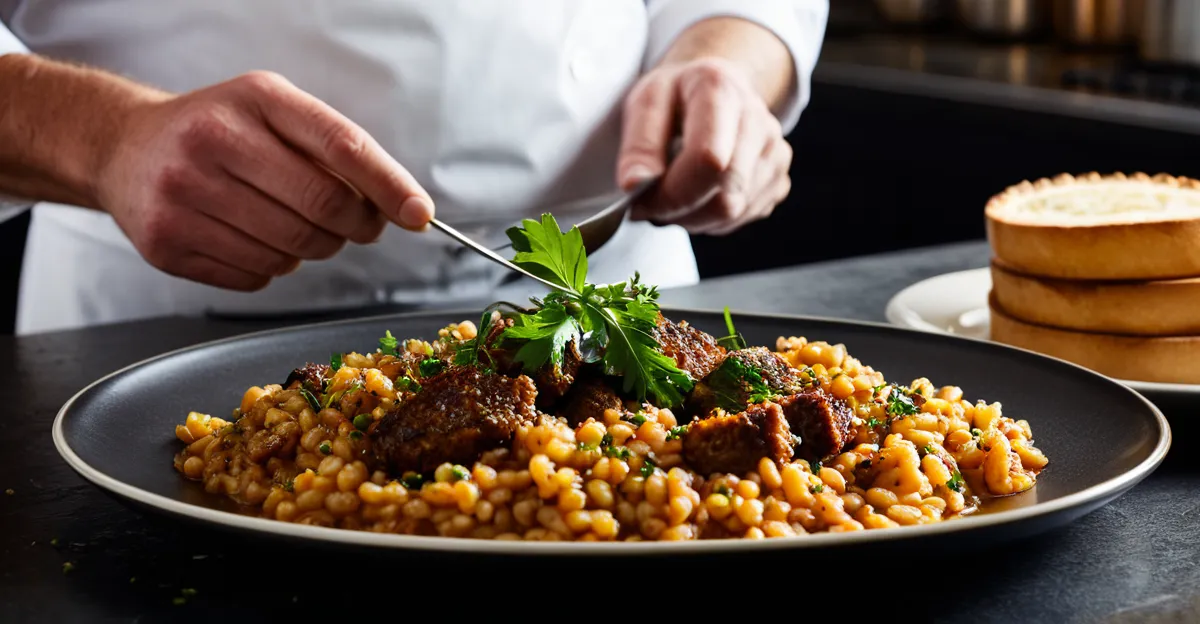Evolution of Traditional UK Cooking in the Modern Era
Traditional UK cooking once revolved around simple, hearty methods involving open hearths, cast iron pots, and slow roasting. Ingredients were mainly local and seasonal, emphasizing dishes like stews, roasts, and puddings. This era prized culinary patience and time-intensive preparation.
The arrival of modern technology in UK cooking has transformed these longstanding practices. Electric ovens became widespread in the mid-20th century, replacing wood or coal-fired stoves, which allowed for more precise temperature control and consistent cooking results. Gradually, appliances like refrigerators and microwaves reshaped how ingredients were stored and meals were reheated, influencing daily routines.
Also read : What Are the Essential Skills to Master UK Cooking Techniques?
Early signs of change included quicker meal preparation and a shift from communal family cooking to more individual, time-sensitive approaches. This began the food culture evolution, where convenience started to meet tradition. British kitchens adapted by integrating gadgets without completely discarding heritage recipes.
Modern technology in UK cooking also enhanced experimentation with flavors and presentation, blending old with new. This evolution is pivotal in understanding how Britain’s culinary identity continues to grow while honouring its roots.
Also read : What are the best methods for cooking fish and chips?
Role of Kitchen Appliances and Gadgets in Modernising UK Cooking
Kitchen appliances UK have been pivotal in transforming traditional British cuisine. The widespread adoption of electric ovens, food processors, and slow cookers introduced efficiency and consistency previously unattainable. These gadgets streamline the preparation of traditional recipes, reducing manual labor and cooking times.
For example, slow cookers allow for the gentle, slow roasting characteristic of many British stews but with minimal attention needed, freeing cooks for other tasks. Food processors simplify the preparation of doughs and mixes, maintaining texture without extensive kneading.
This evolution in kitchen appliances UK supports modernising traditional recipes by balancing respect for heritage with demands for quick, reliable results. Cooking gadgets ensure that classic meals like stews, roasts, and puddings can be enjoyed during busy lifestyles without sacrificing quality.
Such tools also help standardize cooking outcomes. Precise temperature controls and timers prevent errors and enable consistent flavor and texture, even for less experienced cooks. In sum, kitchen appliances UK have catalysed a significant shift in British culinary routines, fostering a new era where tradition and technology complement each other seamlessly.
Influence of Digital Media and Online Resources on Recipe Sharing
Digital cooking resources have revolutionised how traditional British cuisine is shared and adapted. The rise of recipe apps and online UK recipes platforms enables home cooks and professionals alike to access an expansive archive of culinary knowledge instantly. These tools provide step-by-step guides, ingredient substitutions, and cooking tips suited to diverse skill levels.
Social media’s impact is significant in the food culture evolution, popularising both authentic and innovative takes on classic dishes. Platforms like Instagram and TikTok have created communities where traditional recipes are shared, recreated, and reimagined in real time. This fosters a dynamic exchange, encouraging experimentation while maintaining respect for origins.
Access to online UK recipes offers more than convenience; it broadens horizons by introducing global techniques and flavours into British kitchens. Feedback mechanisms such as comments and ratings enable users to refine recipes collaboratively, enhancing cooking outcomes.
In summary, digital cooking resources serve as a conduit for preserving heritage and supporting modern technology in UK cooking. They accelerate changes in traditional British cuisine by integrating knowledge, community support, and diverse influences in an accessible format. This evolution sustains tradition while embracing new culinary possibilities.





